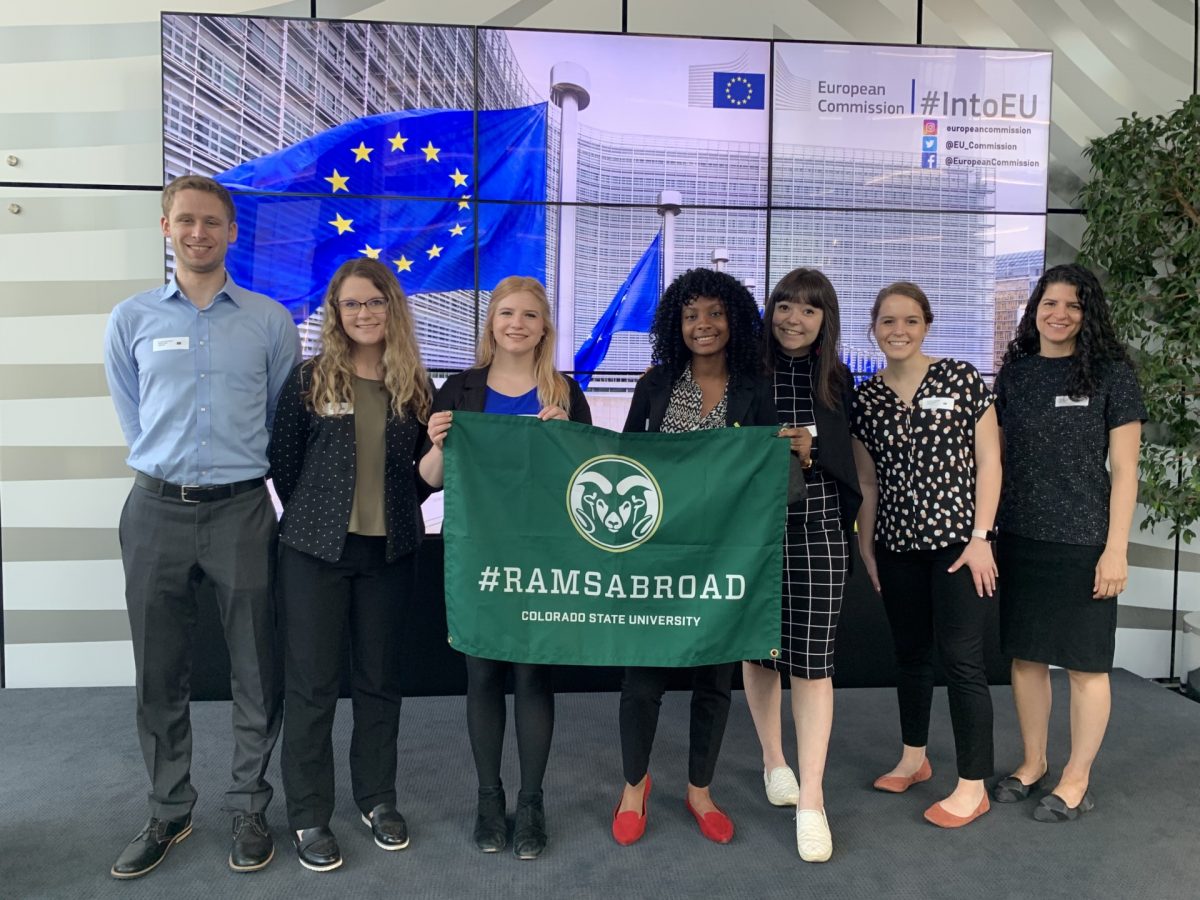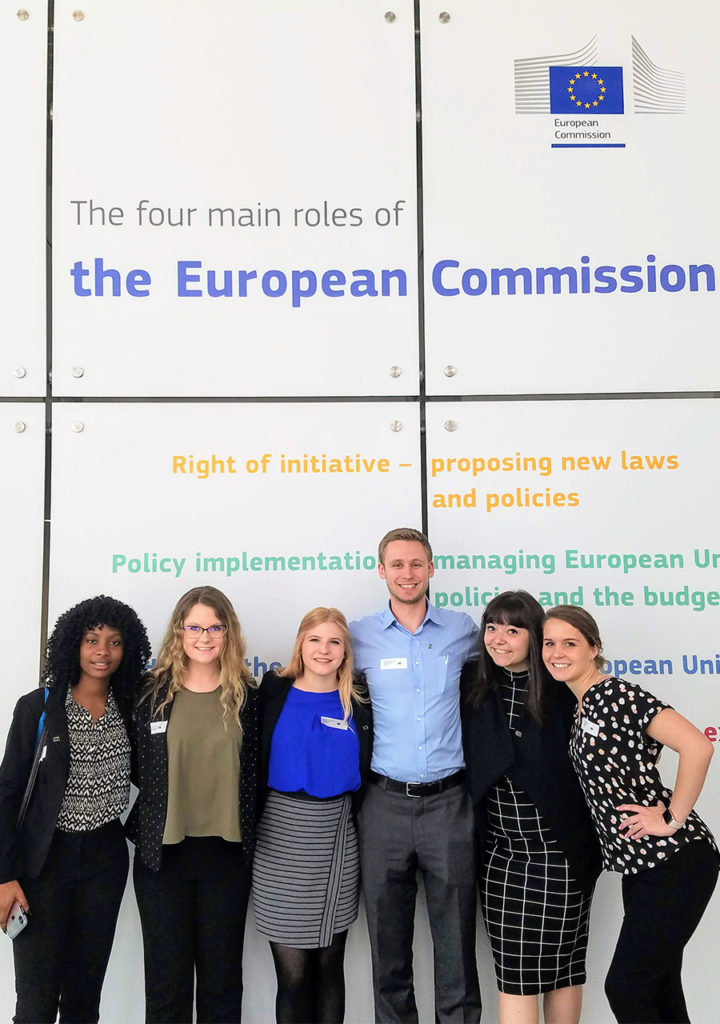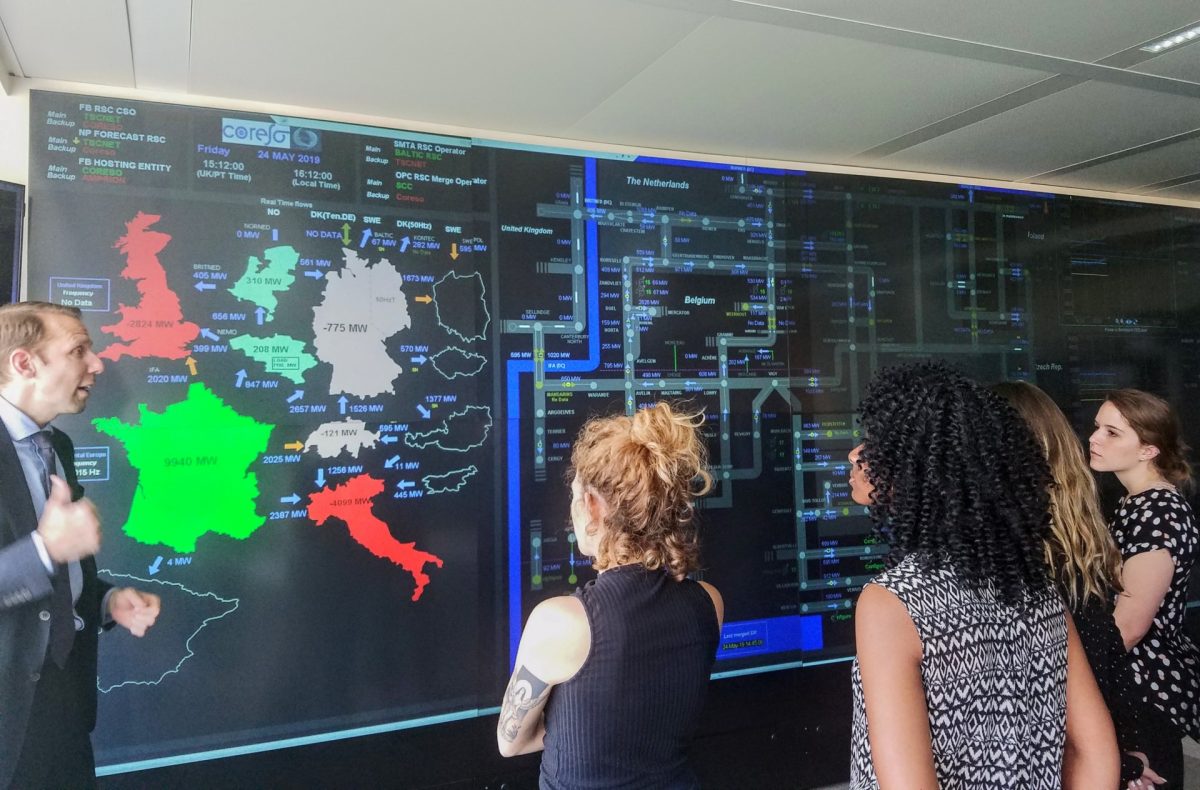
Story by Amanda Martinek. Originally posted on SOURCE.
This summer, six Colorado State University undergraduate students from various disciplines – English education, engineering and economics – sought to understand how transitioning to renewable energy is as much a question about culture as it is about technology.
They participated in the CSU Energy Institute’s first education abroad program, facilitated by Lynn Badia, an assistant professor of English who specializes in environmental and energy humanities. “Energy Transitions,” offered in conjunction with the CSU Office of International Programs, takes an interdisciplinary approach to this issue and allows students to study energy in a European context.
According to Badia, energy transitions affect every aspect of life, including the economy, transportation and a broad range of social challenges, which is what inspired the program.
The Energy Transitions program began by looking at energy in Colorado and the United States. Students met with former Gov. Bill Ritter to learn about the Center for the New Energy Economy at CSU, toured the National Renewal Energy Lab in Golden, and heard about Gov. Jared Polis’s current energy policy agenda.
After starting close to home, students then traveled to Paris, France; Brussels, Belgium; and Copenhagen, Denmark, where they could see how the same energy questions play out in European countries.

While the first official Energy Transitions Education Abroad Program took place May 19-31, planning by Badia and Jeff Muhs, associate director of the Energy Institute, began in earnest last summer. They brought a group of student ambassadors for a research-focused trial run to three European countries and institutions such as the International Energy Agency and Clean Energy Ministerial in Paris. The trip resulted in their dream itinerary, which incorporated student perspectives and feedback.
“Our aim was to create a program that allowed students to understand the interdependence among a broad range of issues affecting efforts to transition to cleaner and more equitably distributed forms of energy,” Badia said. “By traveling to several cultural contexts, students experience firsthand how current energy transitions are being shaped by the specific histories, infrastructures, politics, and lifeways of each place. This program takes energy – something commonly studied from the perspective of science and engineering – and understands it also as historical, social, and cultural.”
Kelsea Altheim, a senior majoring in English education, said participating in this program allowed her to push outside her comfort zone and broaden her knowledge base on energy.
“It seems odd, an English major focusing on energy, but since this program focuses on ‘energy humanities,’ which includes the social, political and cultural sides, I wanted to focus on the social aspect of energy,” she said.
“Denmark is a compelling example for students because it is on track to be 100% renewable by 2050,” Badia said. “Denmark’s strong public support for clean energy legislation has been partly enabled by decades of cultural initiatives – primary education programs on energy and the environment, public communication and narrative campaigns, and new cultural engagement sites related to energy. These initiatives have been effective in bringing the issue of energy to the center of public life – in Denmark, you can see how energy has become an important part of everyday decision making in a way that still isn’t the case in the U.S.”
CSU Energy Institute Education Abroad
Students visited the European Commission in Brussels to learn more about energy legislation.
A big learning moment was when the students had the opportunity to meet with the European Commission, which is the executive of the European Union, to hear firsthand how a piece of cooperative energy legislation took years to develop, debate, compromise, and eventually pass. They then toured inside a control room for the European supergrid.
“These experiences helped students to connect the dots,” Badia said. “The EU’s sweeping ‘Clean Energy for All Europeans’ legislation package that passed just a couple of years ago called for the creation of an interconnected EU grid system, which is now allowing more renewables to come online and be traded among nations to manage energy demand. Seeing the real-time flows of renewable energy on the grid right after visiting the EU Commission gave students a real sense of possibility, with one student even exclaiming, ‘Oh my god, we can actually get this work done.’”

An “a-ha” moment for English major Altheim was a discussion about climate refugees. “At our EU meeting, we discussed how climate change will make people leave their country and how this is a bigger problem than the general U.S. population seems to realize.”
Another surprising moment for Altheim came on a tour of an off-shore wind farm in Copenhagen. “I knew we were going to tour the windfarm, but I didn’t know we would be able to go on the windmill! Studying abroad helps you have really tangible learning experiences,” she said.
The students’ final project is a report that synthesizes the key insights from the program and perspectives gained. They will also propose an actionable element that can be implemented in the United States.
Muhs, associate director of the CSU Energy Institute, is excited to see what innovative ideas and new solutions the students suggest.
“There are already a plethora of technology and policy pathways that have been identified to fight climate change through an equitable and just transition,” Muhs said. “Insights that can still be gained are in areas where energy and society intersect. From a strategic perspective, the Energy Institute views this program as an underserved pathway which could have bigger, broader impacts than any one technical solution.”
For students considering this program for summer 2020, Badia promises this program is a great opportunity to enhance their understanding of energy. “One of the exciting aspects of this program is that it is an investigatory and discovery-based learning opportunity – we are examining energy transitions that are unfolding in the present moment,” Badia said. “We have students and experts alongside one another, collectively thinking through the difficult questions of today’s energy transitions, and the whole group benefits when students bring a wide range of concerns, interests, and disciplinary knowledge to bear on the challenges at hand.”
Altheim agrees.
“You can come from any area or major and you don’t need any specific prerequisites to be successful,” she said. “One of the greatest parts of the program is taking a course with people from different backgrounds while all learning about a new topic. …We were a family together 24/7 for two weeks and everyone got really close.”